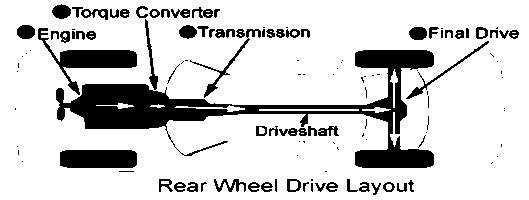←
Automobile Engineering
Transmission In Automobile
Introduction
The transmission is a device that is connected to the back of the engine and sends the power from the engine to the drive wheels.
Process
- An automobile engine runs at its best at a certain RPM (Revolutions per Minute) range and it is the transmission's job to make sure that the power is delivered to the wheels while keeping the engine within that range. It does this through various gear combinations.
- In first gear, the engine turns much faster in relation to the drive wheels, while in high gear the engine is loafing even though the car may be going in excess of 70 MPH.
- In addition to the various forward gears, a transmission also has a neutral position which disconnects the engine from the drive wheels, and reverse, which causes the drive wheels to turn in the opposite direction allowing you to back up.
- Finally, there is the Park position. In this position, a latch mechanism (not unlike a deadbolt lock on a door) is inserted into a slot in the output shaft to lock the drive wheels and keep them from turning, thereby preventing the vehicle from rolling.

- The transmission is usually mounted to the back of the engine and is located under the hump in the center of the floorboard alongside the gas pedal position.
- A drive shaft connects the rear of the transmission to the final drive which is located in the rear axle and is used to send power to the rear wheels.
- Power flow on this system is simple and straight forward going from the engine, through the torque converter, then through the transmission and drive shaft until it reaches the final drive where it is split and sent to the two rear wheels.
